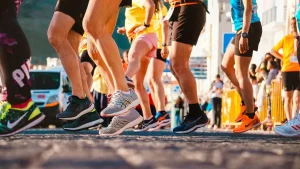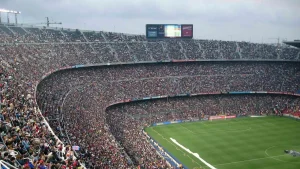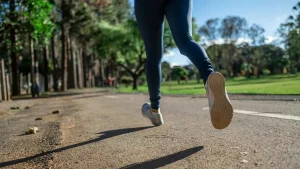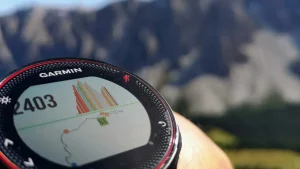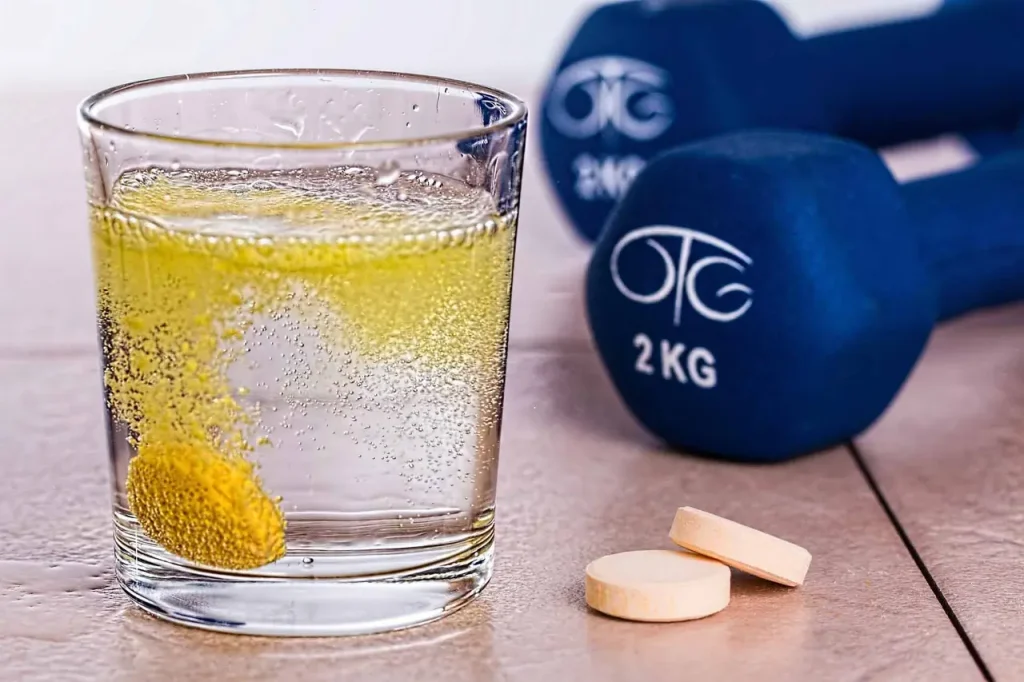
Post-workout hydration tips for Optimal Recovery
I remember it vividly. The final mile of a punishing trail run. My calf seized up, transforming into a rock-hard knot of pure agony. I wasn’t a novice, but I’d made a rookie mistake: I completely ignored my recovery plan. I thought chugging a little water an hour later would be fine. I was an idiot. That painful cramp taught me a brutal lesson about the non-negotiable importance of recovery, and more specifically, it hammered home the value of a solid post-workout hydration plan. It’s not just about quenching thirst; it’s a fundamental part of the entire fitness equation. And honestly, most people are getting it wrong. We focus so much on the reps, the miles, the effort and then completely drop the ball the second the workout ends. Big mistake.
Introduction to Post-Workout Hydration: Why It Matters
So, let’s get real. Why does this matter so much? When you finish a workout, your body is in a state of depletion. You’ve pushed your muscles, burned energy, and, most importantly, you’ve sweat. A lot. Rehydrating isn’t just a suggestion; it’s a critical command for your body to start the repair process. Without it, you’re looking at prolonged muscle soreness, fatigue, and seriously diminished gains from all that hard work you just put in.
Think of it as the essential maintenance your high-performance machine needs after a race. Ignoring this crucial step is like parking a hot engine without letting it cool down. Eventually, something is going to break. The goal is to bounce back stronger for your next session, not crawl into it feeling like you’ve been hit by a truck.
The Science Behind Fluid Loss During Exercise
Let’s talk sweat. It’s your body’s brilliant, built-in air conditioning system. But as it cools you down, it’s also draining you of vital fluids and electrolytes. You might lose anywhere from half a liter to over two liters of sweat per hour, depending on the intensity and environment. This simple, biological process is what causes dehydration after heavy workout sessions. This fluid isn’t just water; it’s a chemical cocktail of sodium, potassium, chloride, and other minerals that are absolutely essential for nerve function and muscle contraction. Losing them is a big deal. Understanding this is the first step toward better recovery.
Common Misconceptions About Hydration After Workouts
There’s so much bad advice out there. “Just drink eight glasses a day.” Too simplistic. “Drink only when you’re thirsty.” Terrible advice. Thirst is actually a lagging indicator of dehydration; by the time you feel it, you’re already behind. Another huge misconception is that water alone is enough. For a light workout, maybe. But after a grueling session? Water alone can sometimes dilute the remaining electrolytes in your system, which can be problematic. Getting your strategy right requires moving beyond these old myths and adopting a smarter hydration strategy that’s backed by actual science.
Essential Electrolytes and Their Role in Recovery
Electrolytes. The word gets thrown around a lot, but what are they really? They are minerals that carry an electric charge and are vital for your body to function. They manage everything from muscle contractions to your heartbeat to fluid balance. The importance of electrolytes for post-workout recovery cannot be overstated. When you sweat them out, you must put them back in. Failing to do so is why you feel foggy, weak, or get those dreaded muscle cramps. This is a cornerstone of any effective recovery protocol.
Understanding Sodium, Potassium, and Magnesium for Athletes
Let’s break down the big three. Sodium is the main electrolyte you lose in sweat, and it’s critical for maintaining fluid balance. Potassium works with sodium to help with muscle function and prevent cramping. And magnesium? It plays a role in hundreds of enzymatic reactions, including energy production and muscle relaxation. Neglecting any of these can throw your system completely out of whack. Seriously, paying attention to these minerals will revolutionize your recovery. A proper hydration plan always accounts for these key players.
Natural Sources of Electrolytes for Replenishment
You don’t always have to reach for a brightly colored sports drink. Nature has you covered. Bananas and sweet potatoes are potassium powerhouses. Nuts, seeds, and leafy greens are packed with magnesium. For sodium, a pinch of sea salt in your recovery drink or a handful of pretzels can do the trick. Foods that help with post-exercise hydration would also include watermelon, celery, and cucumbers because of their high water and mineral content. Eating your hydration is a legitimate and effective strategy.
Optimal Hydration Strategies for Different Workouts
Not all workouts are created equal, so why would your hydration strategy be one-size-fits-all? It shouldn’t. Tailoring your approach is one of the most effective hydration tips you can implement. The demands of a marathon are vastly different from a heavy lifting session.
Hydration for Endurance Training: What You Need to Know
Endurance athletes are sweating for prolonged periods, making them prime candidates for significant fluid and electrolyte loss. These athletes need the most effective hydration strategies. The game here is about consistent replacement. After a long run or ride, you need to focus on replacing not just water, but also carbohydrates and electrolytes, especially sodium. A good rule of thumb is to weigh yourself before and after your workout. For every kilogram of body weight lost, you should aim to drink about 1.5 liters of fluid. It’s a simple yet effective way to gauge your needs.
Strength Training and Post-Workout Fluid Intake
While you might not be dripping with sweat the same way as after a 10-mile run, hydration is still key for strength athletes. Dehydration can impair muscle repair and growth, which is the entire point of lifting weights in the first place. Post-workout hydration for strength training focuses on restoring fluid balance to support muscle recovery. Since you’re breaking down muscle fibers, providing them with the fluid they need to repair and rebuild is essential, making optimal fluid intake for muscle recovery a priority. Don’t sabotage your gains by skimping on fluids.
Quick Recovery Hydration for High-Intensity Interval Training (HIIT)
HIIT sessions are brutal and intense. They push your heart rate through the roof and can lead to rapid fluid loss in a short amount of time. The key here is speed and efficiency. You need tips for rehydrating quickly after gym sessions like these. A drink containing both electrolytes and some simple carbohydrates can help shuttle fluid into your system faster. This is not the time for slowly sipping water; you need an efficient solution to kickstart your recovery immediately. That’s a key piece of advice for HIIT lovers.
Beyond Water: Best Drinks for Post-Workout Recovery
Plain water is great, but sometimes it just doesn’t cut it. Your body is screaming for more than just H2O after a tough workout. Exploring other options can dramatically improve how you feel and perform the next day. This is where knowing what to drink after an intense workout for rehydration becomes a game-changer.
Sports Drinks vs. Coconut Water: A Comparative Look
This is a classic debate. When comparing water vs. sports drinks for recovery, sports drinks often win for intense, prolonged exercise because they are scientifically formulated with the right ratio of carbs and sodium for rapid absorption. But what about a more natural choice? The benefits of coconut water for post-workout recovery are notable; it’s high in potassium and has some natural sugars. However, it’s typically low in sodium, the main electrolyte you lose. So, for a moderate workout, coconut water can be great. After a monster session in the heat? A traditional sports drink might have the edge. It’s about context. There isn’t a single answer for when to use sports drinks for recovery; it depends on the workout’s duration and intensity. This is crucial advice.
DIY Hydration Solutions: Recipes and Benefits
Why buy when you can DIY? Creating your own recovery drink is easy, cheap, and puts you in complete control of the ingredients. Excellent homemade electrolyte recipes for athletes can be as simple as water, a splash of fruit juice (for carbs and potassium), and a tiny pinch of sea salt (for sodium). This is one of my favorite tips. You can get creative, adding maple syrup for quick energy or ginger to help with inflammation. You get exactly what you need, with no artificial junk.
When to Consider Oral Rehydration Solutions
Sometimes, you push it too far. In cases of significant dehydration—we’re talking dizziness, headache, extreme fatigue—an Oral Rehydration Solution (ORS) might be necessary. These are medically formulated solutions available at pharmacies, containing a specific, potent blend of glucose and electrolytes designed for maximum, rapid absorption. They aren’t for everyday use, but they are incredibly effective for pulling you back from the brink of severe dehydration. Knowing when you’ve crossed that line is a key part of smart athletic care.
Practical Tips for Sustained Hydration and Performance
Knowing the science is one thing. Applying it consistently is another. Let’s get down to the practical, everyday habits that make a real difference. These are the practical habits that will become second nature.
Monitoring Your Hydration Levels: Simple Tests
How do you know if you’re getting it right? There are simple tests. The first, and easiest, is the urine test. Aim for a pale straw color. If it’s dark, you need to drink more. This is one of the clearest signs of proper hydration after a run. Another is monitoring your morning body weight. A significant drop from one day to the next can indicate you didn’t rehydrate properly the day before. These simple checks help you understand how to tell if you are properly hydrated after exercise.
Building a Personalized Post-Workout Hydration Plan
Your plan should be yours. Consider your sweat rate (remember the pre- and post-workout weigh-in?), the type of exercise you do, and the climate you’re in. Maybe you need more sodium than the next person. Maybe you prefer to eat your hydration. Experiment and see what works. Write it down. A personalized plan is one of the most powerful tools you can have in your arsenal. The best way to restore fluids after sweating is the way that works for your unique physiology.
The Long-Term Benefits of Consistent Hydration
This isn’t just about feeling good tomorrow. Consistent, proper hydration impacts everything. It improves energy levels, cognitive function, joint health, and your body’s ability to adapt and get stronger over time. The long-term effects of poor post-workout hydration can be subtle but damaging, leading to chronic fatigue and a plateau in performance. Don’t let poor habits undermine your long-term goals. Making proper hydration a regular habit is an investment in your athletic future and is crucial for avoiding dehydration during intense physical activity.
Conclusion: Making Hydration a Priority for Peak Performance
At the end of the day, all the effort you pour into your training can be amplified or nullified by what you do in the hour that follows. It seems so basic, yet it’s so often overlooked. Treating your rehydration with the same seriousness as your training session is the mark of a smart athlete. Stop seeing it as an afterthought. Make it a priority. Your muscles, your mind, and your performance will thank you for it. These aren’t just suggestions; these are fundamental principles for anyone who is serious about their health and fitness. For those seeking specific drinks to rehydrate fast, remember the principles of electrolytes and carbs. It’s about intelligent replenishment, understanding how much water to consume after exercise, and listening to your body. Ultimately, the best natural post-workout hydration drinks are often the ones you make yourself, tailored perfectly to your needs. Now go crush that workout, and more importantly, crush your recovery.



